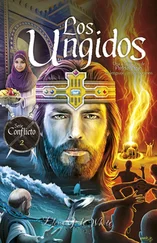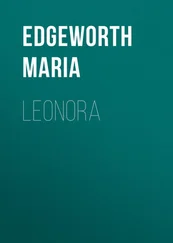A Peruvian by the name of César Moro attends the parties held on Gabino Barreda. He is slim and small beneath his felt hat. He writes in French, the language he has adopted following nine years living in Paris in André Breton’s shadow.
‘I separated from him when he announced that the only valid manifestation of love is heterosexual.’
He still nostalgically recalls verses from his first notebook, which he gave to Eluard.
‘He left it behind on a train.’
‘Then write it over again.’
‘I can’t.’
‘Then kill Eluard. Did you also take part in the homage paid by the Surrealists to Violette Nozière, César?’ asks Remedios.
‘Yes indeed. She was sentenced for killing her father and for the attempt on her mother’s life.’
‘I would also like to kill Carrington.’
‘And if you do it, I promise I’ll write you a collection of poems.’
‘Breton dedicated a poem to la Nozière where he says that before her winged sex, like a flower in the catacombs, students and the elderly, priests and judges and lawyers all bend their knee, for every hierarchy ends in copulation.’
Xavier Villarrutia and the artist Agustín Lazo come to visit them at the invitation of César Moro, the co-founder with Emilio Westphalen of the magazine El Uso de la Palabra. Octavio Barreda is also interested in a magazine called Dyn. Paalen is an enthusiast of totemic art and wants to know all about art in Mexico before the Spanish Conquest. He argues heatedly about Freud’s Totem and Taboo , where he discusses animism, magic and the omnipotence of the thought processes of primitive people. Taboo is far more ancient than the gods of any religion. On the other hand, the Peruvian has no idea what Machu Picchu is, and has never bothered to go and take a look. He complains that no-one will publish him in France, still less in Lima, because his book would need to be translated.
‘Why ever do you write in French? What a curious way to complicate your life!’ Alice Rahon, his closest friend, comments.
Moro calls his continent ‘ Cretinoamérica ’. Paalen invites him to contribute to his magazine, Dyn, due to his admiration for his law suits with the Chilean poet, Vicente Huidobro.
‘Vicente is an imitator,’ Moro insists.
‘What is this all about Dyn ?’ asks Leonora.
‘ Dynaton , whatever is possible … Or have you already forgotten your Greek? Dyn is going to promote the art of Alaska, of the Maya, the Aztecs, and will re-evaluate the work of those painters for whom the Mexican muralists are an abomination.’
‘Who are they? There aren’t any, because the whole lot of them are immersed in that shit,’ Péret exclaims.
‘I came to know a very different young artist, along with his wife. The two of them paint in a very similar style. Their names are Rufino Tamayo and María Izquierdo,’ Paalen recalls.
Benjamin Péret is ill at ease in Mexico, he spends his whole life looking behind him. He is passionate about El Libro de Chilam Balam ; reading the Popol Vuh excites him; he consults codices and manuscripts, but his mind is more on the capitulation of France to the Nazis than on the folk tales of the Quich’e Maya.
‘I write on them, even though my French never leaves me,’ he laments.
‘The hallucination I experienced in the caves of Altamira changed me forever, it is the most primitive people who have the most genius,’ avers Paalen.
Each time a new road is opened, pre-Colombian artefacts come to light: all you need to do is follow the bulldozers in order to pick them up. Even in cemeteries, vases and pots turn up, they catch your eye like popcorn. Paalen enthuses over broken objects and the obsidian arrows buried around the pyramids of Teotihuacan.
‘I cannot manage to understand how you can be so enthused. Mexico is such a horribly sad city,’ alleges Péret. ‘It is dead, without either cafés or bars.’
‘And what about the famous tiled Sanborn’s on Calle Madero?’
‘What I mean are the pavement cafés that can bring everything to life, with tables out in the open air, where unexpected encounters happen, Nadja suddenly turns up and asks you for a light …’
Remedios is the only one of them who has work and she keeps prodding the rest to ‘get moving’. Eva Sulzer, mistress of a vast fortune, financially maintains both Wolfgang Paalen and Alice Rahon.
‘I make whatever it’s necessary for me to turn my hand to: making posters and tickets, or designing clothes, decorating furniture and restoring the pre-Cortésian antiques that Paalen brings me,’ boasts Remedios.
‘And I shall give you some work on Dyn ,’ announces Paalen.
‘Who will pay for that?’
‘Eva.’
Eva Sulzer also buys their paintings from them.
A cemetery filled with prehispanic artefacts has been uncovered in Tlatilco, and Péret, so gloomy as a rule, grows enthused. What sophistication! What mystery! Some of the masks they find are astounding. It takes scant work to reconstruct the broken figurines and Remedios gets emotional when she manages to recapture the smile on a clay face.
The smallest jade bead is a gift from heaven in the hands of Benjamin Péret and Wolfgang Paalen.
‘Well before the Christian era, the Maya were able to predict eclipses,’ Miguel Covarrubias explains, who has also agreed to contribute to Dyn .
Paalen goes from the highest mood peaks to the deepest depressive abysses. Some days his wife, Alice Rahon, cannot get him to rise from his bed, even for meals. When he is asked what on earth he does all day long with the curtains and the door tightly closed, he answers: ‘I stare at the ceiling.’ So she asks Covarrubias to help her. ‘El Chamaco’ (the Kid) invites Paalen to Tabasco and drives him crazy with delight showing him five Olmec heads he found in the archaeological terrain at La Venta.
‘I have never seen anything possessed of such weight, expressiveness and essence!’
He returns to the capital in a state of exaltation, and writes — without stopping, in one fell swoop — an essay that gets published in the Cahiers d’Art.
The regular suppliers of both Paalen and Péret arrive with brown paper sacks which they open to reveal precious artefacts from Iztapalapa, Tenayuca, Teotihuacan and as far away as Xochicalco and Tula. Diego Rivera completes his private collection and Jean Charlot sketches and catalogues each and every figurine. Miguel Covarrubias is the most enthusiastic and generous of all. Kurt Stavenhagen’s collection of popular culture is to be envied and Álvar Carrillo Gil, from the Yucatán, monopolises finds from the Maya peninsula. Péret has never dreamt that pre-Colombian art could be so much in demand. He writes to New York and Paris advertising the wares for sale, and receives one order after another by return of post.
‘Mexicans are ignorant of the treasures they possess. This country has a head that needs examining.’ Péret laughs each time a peasant comes to the door from Cholula or Cuicuilco and asks $2.50 for a treasure of incalculable value.
‘One day they will come to their senses,’ Paalen predicts, ‘but for now we’re well off, whereas later on we’ll be dead.’
The market in such idols is centred on New York, Paris and Berlin. Remedios employs her seamstress’ hands to restore them, and finds it incomprehensible that despite her best efforts Péret never has a centavo to his name.
‘Go and ask Eva to pay you.’
‘How lucky you are to have a Swiss woman, as well as all the Petits Suisses.’
‘You can’t get Petits Suisses in Mexico.’
‘The white cheese from Chihuahua is similar, and it tastes just as good.’
Читать дальше












